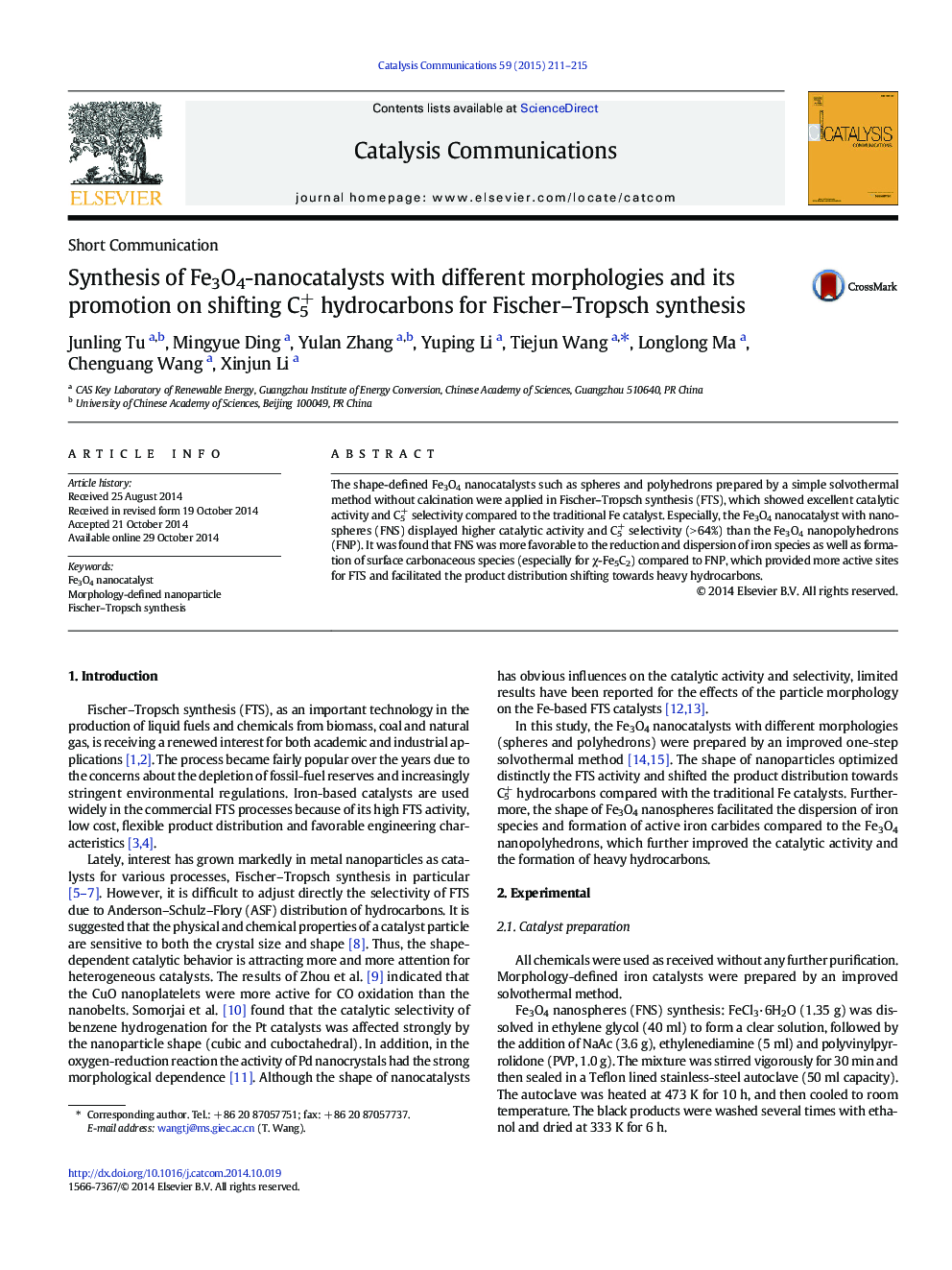| Article ID | Journal | Published Year | Pages | File Type |
|---|---|---|---|---|
| 49549 | Catalysis Communications | 2015 | 5 Pages |
•Fe3O4 nanosphere and nanopolyhedron are prepared by a simple solvothermal method.•Fe3O4 nanocatalysts show excellent catalytic performances for FT synthesis.•Fe3O4 nanosphere catalyst is more active than nanopolyhedrons.•Fe3O4 nanosphere catalyst displays higher C5+ selectivity than nanopolyhedrons.
The shape-defined Fe3O4 nanocatalysts such as spheres and polyhedrons prepared by a simple solvothermal method without calcination were applied in Fischer–Tropsch synthesis (FTS), which showed excellent catalytic activity and C5+ selectivity compared to the traditional Fe catalyst. Especially, the Fe3O4 nanocatalyst with nanospheres (FNS) displayed higher catalytic activity and C5+ selectivity (> 64%) than the Fe3O4 nanopolyhedrons (FNP). It was found that FNS was more favorable to the reduction and dispersion of iron species as well as formation of surface carbonaceous species (especially for χ-Fe5C2) compared to FNP, which provided more active sites for FTS and facilitated the product distribution shifting towards heavy hydrocarbons.
Graphical abstractFigure optionsDownload full-size imageDownload as PowerPoint slide
